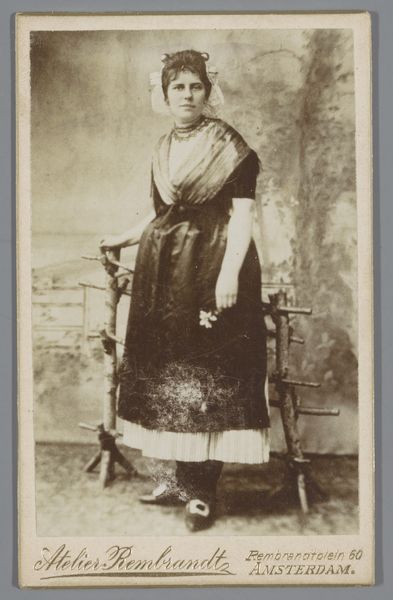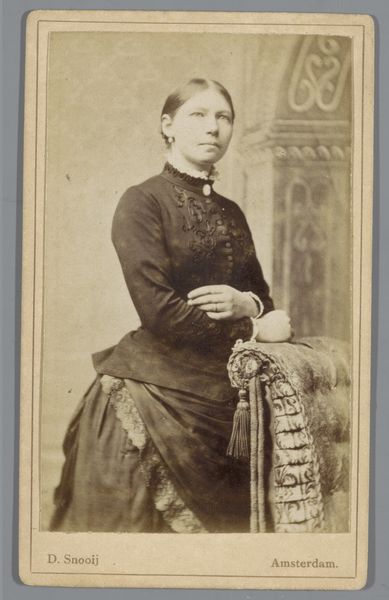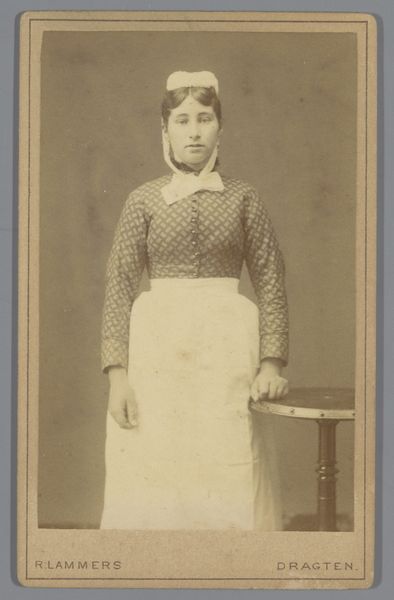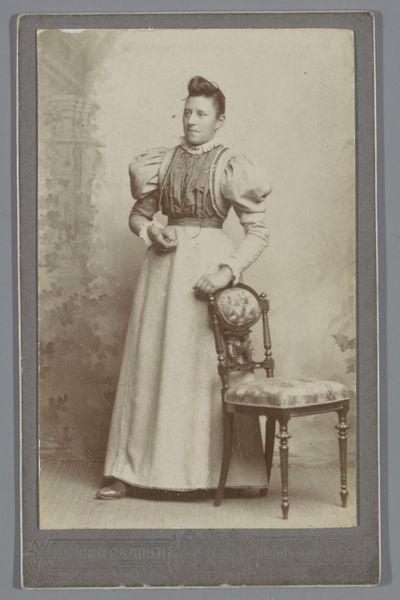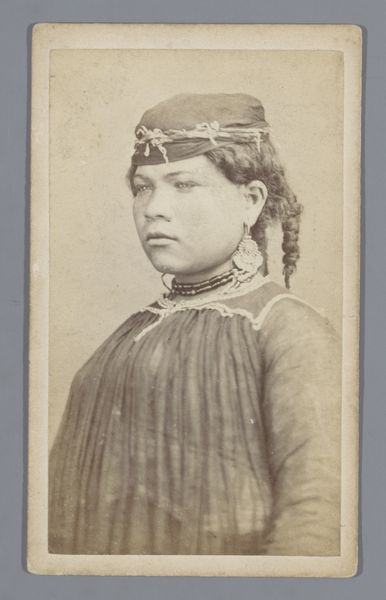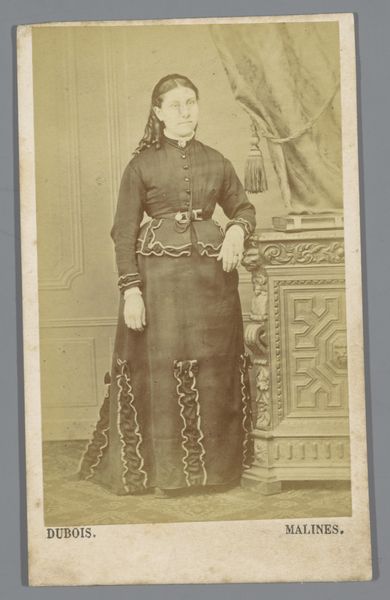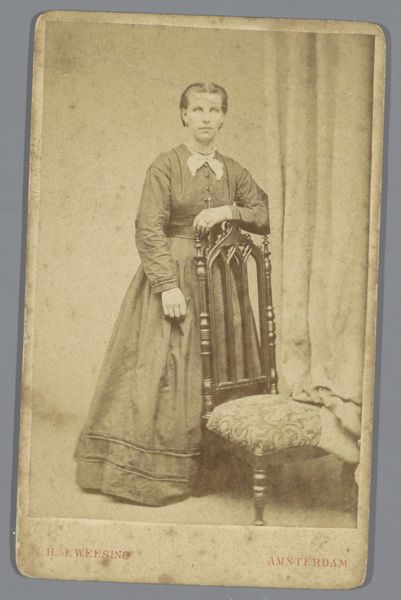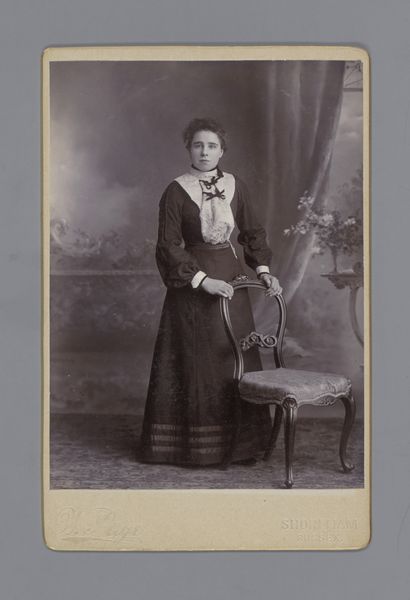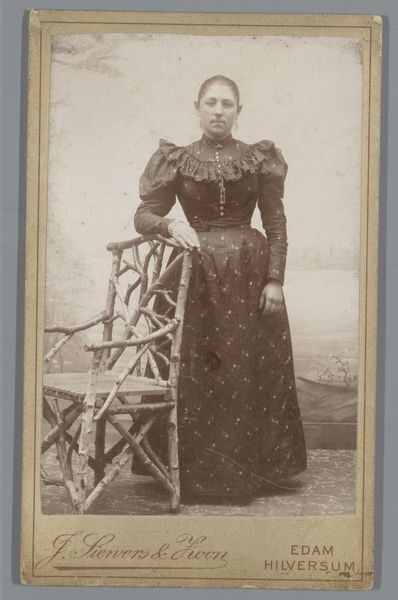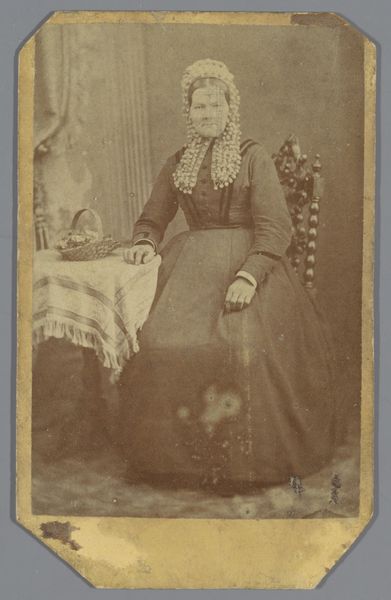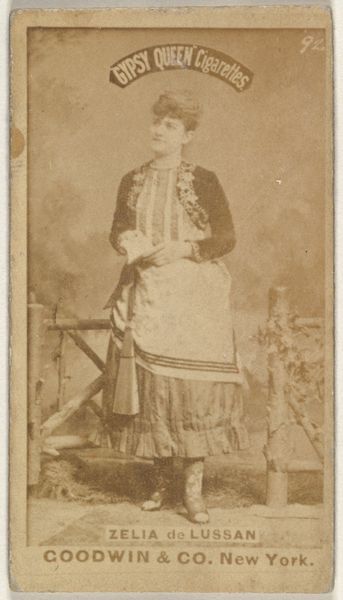
photography, albumen-print
#
portrait
#
photography
#
19th century
#
genre-painting
#
albumen-print
#
realism
Dimensions: height 103 mm, width 64 mm
Copyright: Rijks Museum: Open Domain
Curator: Here we have a carte-de-visite portrait, "Portret van een onbekende vrouw," by Lambertus Martinus Delboy, dating from around 1884 to 1906. The medium is listed as an albumen print, a popular photographic process in that era. Editor: She appears quite serious, almost stern. The sepia tones lend an aura of old-world gravitas. There's also something very deliberate about her posture. It communicates her strength. Curator: Indeed. Studio photography became more accessible to the middle classes during this period. It offered a new way to record and present oneself to the world. It's a posed, formal depiction, adhering to the conventions of studio portraiture. We must consider the socio-political implications for women. How did these visual codes dictate female respectability? Editor: She's wearing what appears to be traditional garb - a cap and heavily embroidered shawl. What strikes me is how photography gave rise to an explosion in images that captured the lives of people often marginalized in mainstream society. I wonder if she chose these garments for the picture or was this her everyday dress? How do we consider its intersectional components concerning class, status, ethnicity, or perhaps a declaration of identity and cultural roots during that time? Curator: Good questions. Perhaps this garment connects to ideas of regional identity or social standing within her community. Consider the historical power structures embedded within seemingly simple portraits. The rise of photography provided the wealthy an effective method for producing propaganda on their perceived prestige. Does her representation participate or challenge that perception? And, given that her name remains a mystery to us, isn't it also critical to acknowledge her anonymity while deconstructing the structures she experienced? Editor: The setting is quite minimal, though—merely a fence element she's leaning against. It might evoke some symbolic idea about connecting to land or home but the composition looks artificial; more as if an added element in a photographer’s studio. Overall, these elements are essential to dissect as each facet unveils her life. Her image continues living beyond that frame. Curator: Precisely. It prompts vital considerations on female visibility, representation, agency, and resilience, enriching discourse through diverse interpretive frameworks. This photograph creates room to critically analyze these systems with her at its center. Editor: A poignant point to end our musings on the unknown woman portrayed in the photograph. Hopefully, listeners find a reflective meaning that resonates deeply with each interpretation.
Comments
No comments
Be the first to comment and join the conversation on the ultimate creative platform.
